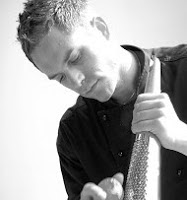Gaetano Scirea - footballer
Multiple champion who died tragically young
The World Cup-winning footballer Gaetano Scirea, one of the most accomplished players in the history of the game, was born on this day in 1953 in the town of Cernusco sul Naviglio in Lombardy. Scirea, who became an outstanding performer in the so-called libero role, was a key member of the Italy team that won the 1982 World Cup in Spain and enjoyed huge success also in club football. In a career spent mostly with Juventus, he won every medal that was available to a club player in Italy, some several times over. During his time there, the Turin club won the scudetto - the popular name for the Serie A championship - seven times and the Coppa Italia twice. He also won the UEFA Cup, the European Cup-Winners’ Cup, the European Cup (forerunner of the Champions League), the UEFA Super Cup and the Intercontinental Cup. Scirea retired in 1988 but continued to work for Juventus. Tragically, while visiting Poland in 1989 to make a scouting report on an upcoming opponent in a UEFA Cup match, the car he was travelling in collided head-on with a truck in heavy rain and he was killed, along with two fellow passengers. Read more…
____________________________________________________________
Enrico Berlinguer - Communist politician
Popular leader turned left-wing party into political force
Enrico Berlinguer, who for more than a decade was Western Europe's most powerful and influential Communist politician, was born on this day in 1922 in the Sardinian city of Sassari. As secretary-general of the Italian Communist Party from March 1972 until his death in 1984, he led the largest Communist movement outside the Eastern Bloc, coming close to winning a general election in 1976. He achieved popularity by striving to establish the Italian Communists as a political force that was not controlled from Moscow, pledging a commitment to democracy, a parliamentary system, a mixed economy, and Italian membership of the Common Market and the North Atlantic Treaty Organization. At its peak, Berlinguer's Westernized brand of Communism appealed to nearly a third of Italian voters. His policies were adopted by other left-wing parties in Europe under what became known as Eurocommunism. As support for the previously dominant Christian Democrats waned in the 1970s, he proposed a ''historic compromise'' with other parties, rejecting the traditional left-wing vision of violent revolution, and declared that the Italian Communists would be happy to enter into a coalition with Christian Democrats and others. Read more…
___________________________________________________________
Stefano Baldini - Olympic marathon champion
Won gold medal over historic course in Athens
Stefano Baldini, the marathon runner who was Olympic champion in Athens in 2004 and twice won the European marathon title, was born on this day in 1971 in Castelnovo di Sotto, about 14km (nine miles) north-west of the city of Reggio Emilia. Although Baldini’s class was not doubted, his Olympic gold was slightly tarnished by an incident seven kilometres from the finish when a spectator broke through the barriers and attacked the Brazilian runner, Vanderlei de Lima, who was leading the field. The spectator, an Irishman called Conelius Horan who had disrupted the British Grand Prix motor race the previous year, was wrestled off de Lima by another spectator but the incident cost the Brazilian 15 to 20 seconds and much momentum. He was passed subsequently by Baldini and finished third. Baldini finished the race, which followed the historic route from Marathon to Athens, in two hours 10 minutes and 55 seconds, although this was not the fastest time of his career. His best was the 2:07:56 he clocked at the 1997 London Marathon, when he finished second, in what is still the fastest time by an Italian over the marathon distance. Read more…
_________________________________________________________
Padre Pio – Saint
Capuchin friar is claimed to have cured cancer
Padre Pio, who has become one of the world’s most famous and popular saints, was born on this day in 1887 in Pietrelcina in Campania. He was well-known for exhibiting stigmata, marks corresponding to the crucifixion wounds of Jesus, constantly making him the subject of controversy. Padre Pio has said that at five years old he decided to dedicate his life to God and as a youth he reported experiencing heavenly visions and ecstasies. At the age of 15 he was admitted to the novitiate of the Capuchin Order, taking the name of Fra Pio, in honour of Pope Pius I. He suffered from poor health for most of his life and fellow friars say he often appeared to be in a stupor during prayers. One claimed to have seen him in ecstasy, levitating above the ground. In 1910 he was ordained a priest and moved to a friary in San Giovanni Rotondo in Foggia. He was called up to serve in the Italian army during the First World War and assigned to the medical corps in Naples, but because of his poor health he was declared unfit for service and discharged. In 1918 he exhibited stigmata for the first time while hearing a confession. This was to continue until his death 50 years later. Read more…



























